The traditional org chart is all wrong. It puts the people that work directly with your customer at the lowest position on the pyramid. This makes the customer the least important person in the picture. Servant Leadership will flip that pyramid. What if your leaders saw their primary mission as support for those closest to the customer? What kind of difference would that have on customer loyalty and satisfaction?
I have written at length about value creation for a Great Company – and I started with a focus on the employee. For some, this might seem out of order – what about “customer obsession”? Aren’t we concerned with the customer first?
Of course we are – in our professional lives, we all grew up understanding that The Customer Is Always Right. It sounds a bit cliché, yet most people see this as a fundamental business truth. And in most businesses, support teams like Finance, Legal, HR, and IT see themselves as internal service functions, providing their skills and efforts to the folks in Operations, Sales, Engineering, etc. – their “internal customers.”
There is another important idea that we all grew up with – something that dominates how we see the world and our place in it. Organizations are strict hierarchies; CEO at the top, supported by a team of Execs, and a progression of managers below. This structure is always drawn as shown – CEO at the top, with the organization cascading down the page.
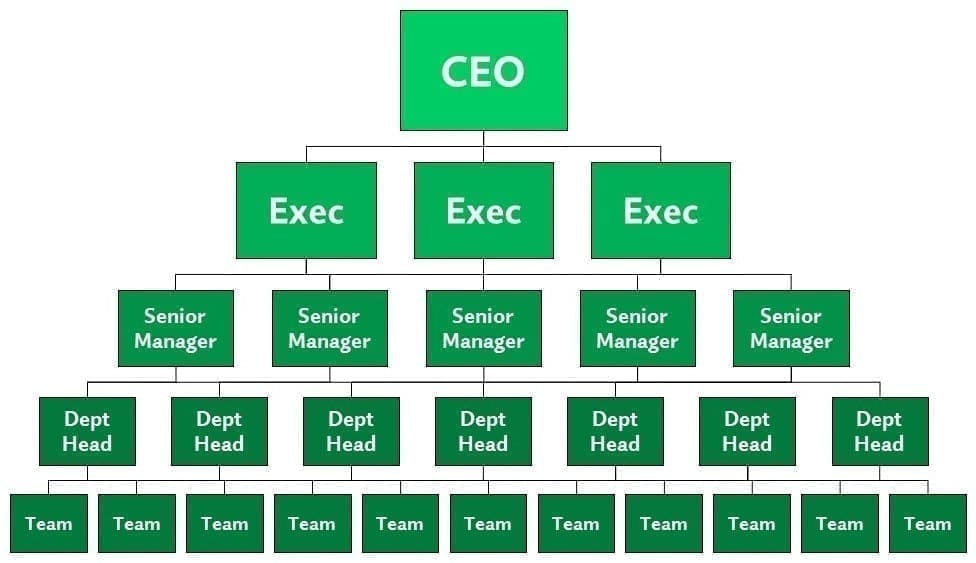
And how do we describe behaviors that occur in this structure? We say things like reporting up, climbing the corporate ladder, cascading objectives, drilling deep into the organization … and, well, you know … ‘dirt’ always rolls downhill. We draw larger boxes at the top, and resort to small fonts and abbreviations to get the “lower level” names on the page (if they make it there at all).
Management methods and metrics are focused on pushing information up this structure. We want to make sure our boss knows everything that is going on in our lives, so they can tell their boss, and they can tell their boss, and so on up to the CEO, who needs to inform the Board of Directors, and ultimately the shareholders.
Can you see how this kind of thinking gets in the way of employee engagement? This structure reinforces command & control and hierarchy, and de-emphasizes the efforts and opinions of the people on the team. There will always be a need for vision, direction, metrics, and feedback – but this energy is better focused on the people at the point of impact.
Can you see how this kind of thinking gets in the way of our relationships with the customer? We are too internally focused; think of all the time and energy we spend “managing up”, when we could (and should) be moving that extra attention externally, and out towards our customers.
Flipping the Pyramid
Here is the secret … this entire structure is upside down! Why? Because it puts the people on the front lines – the folks that work directly with your customers – at the lowest position in this pyramid. This point of view makes the customer the least important person in this entire picture.
But what if we flipped the pyramid? What if the folks [formerly] at the top considered “service and support for those closest to our customer” to be their primary mission? Let’s stop paying so much attention to all the detailed facts and figures that define how we are going to deliver on our financial or other metrics … what if we took all that energy and focused it on our customers? What kind of difference would that have on customer loyalty and satisfaction?
And what about the impact on your team? What kind of difference do you think that would make on ideas like engagement and inclusion – when you focus on (quite frankly) the most important people of the organization – those connecting directly with your customers?
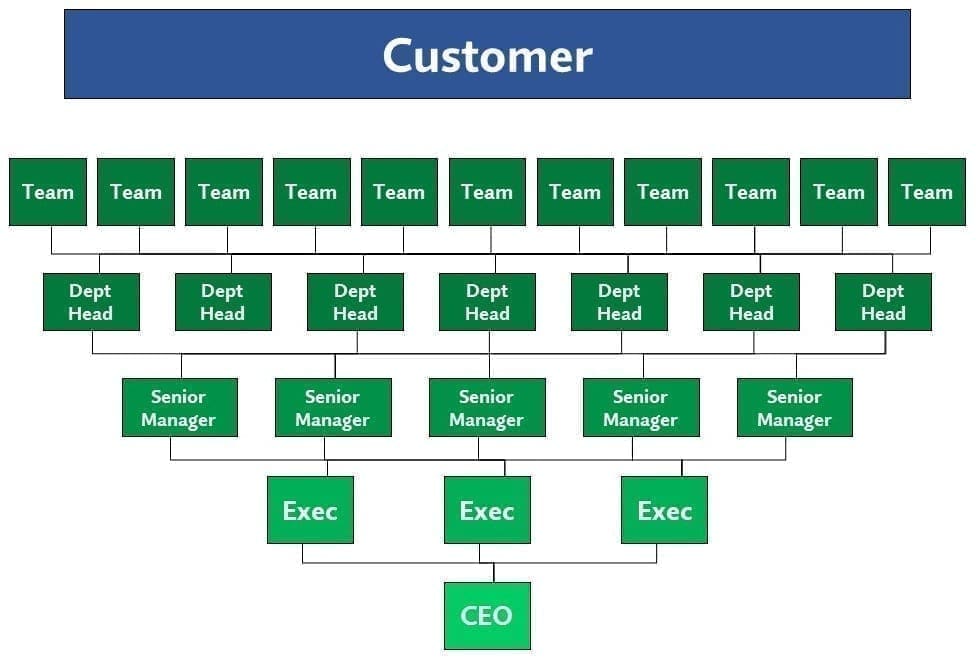
This is the basic idea behind something called servant leadership – where management flips the focus towards service, support, and “leaning in” towards the most significant opportunities and challenges, primarily where they impact the relationship with your customers. Your great teams will generate outstanding returns when you take care of the customer.
Are you serious?
Sure, it looks easy – almost a little extreme. Breakthrough ideas are never as easy as they appear. Most businesses already have an element of customer service in their objectives and core strategy. And few would think they can stop reporting financial details out to Wall Street.
But there are many terrific ideas embedded in this “flipping the pyramid” stuff, if you think about it.
- Switching from an administrative, command-and-control mentality to one of collaboration and service before self
- Pivoting from an internally focused point of view to one that is focused externally, on our customers
- Changing from incrementalism, small gains, and optimization (of time, people, & money), to one of entrepreneurialism, and maximization of what’s possible
To be clear – I do not see this as a chronic problem at most companies, something that is broken and needs to be fixed. However, if your customers are that critical to your success, then your traditional org structure is upside down. The classic pyramid scheme puts the most important people in the company at the bottom of the pyramid – the people that do stuff that matters, at the point of impact.
But imagine how much better things could be if we pivot towards this customer first, servant leader mindset. Done in the right way, it allows us to think much differently about the tasks we do, and the time we spend every single day – redirecting some of that energy towards things that will genuinely help our customers.
Servant Leadership Insights for Digital Transformation
Servant Leadership is a powerful aspect of digital thinking for the leadership team and your internal support functions. Think of it – who are your customers? It is the folks in Customer Service that talk directly with the customers. And the people in Operations, who make and ship the products to our customers. And the teams in Marketing and Product Development, who are listening to our customers to find out what they need, and what innovations we need to put into our products.
Your digital transformation team must focus on their [internal] customers, and their customers’ [external] customers.
Hey … that’s kind of like marketing to end users of our products, but selling directly to dealers. An interesting parallel between internal management functions and channel managers within the business…
As you drill into the nuances of Servant Leadership, expect some thoughtful conversations within your teams.
- What can I do to make your job easier, your work more effective, your results more impactful?
- What can you do to change how you work with your customers, to make it easier for them to deliver value for their customers?
Another example of the human element in your digital transformation; success here can lead to breakthrough results!
27 May, 2020

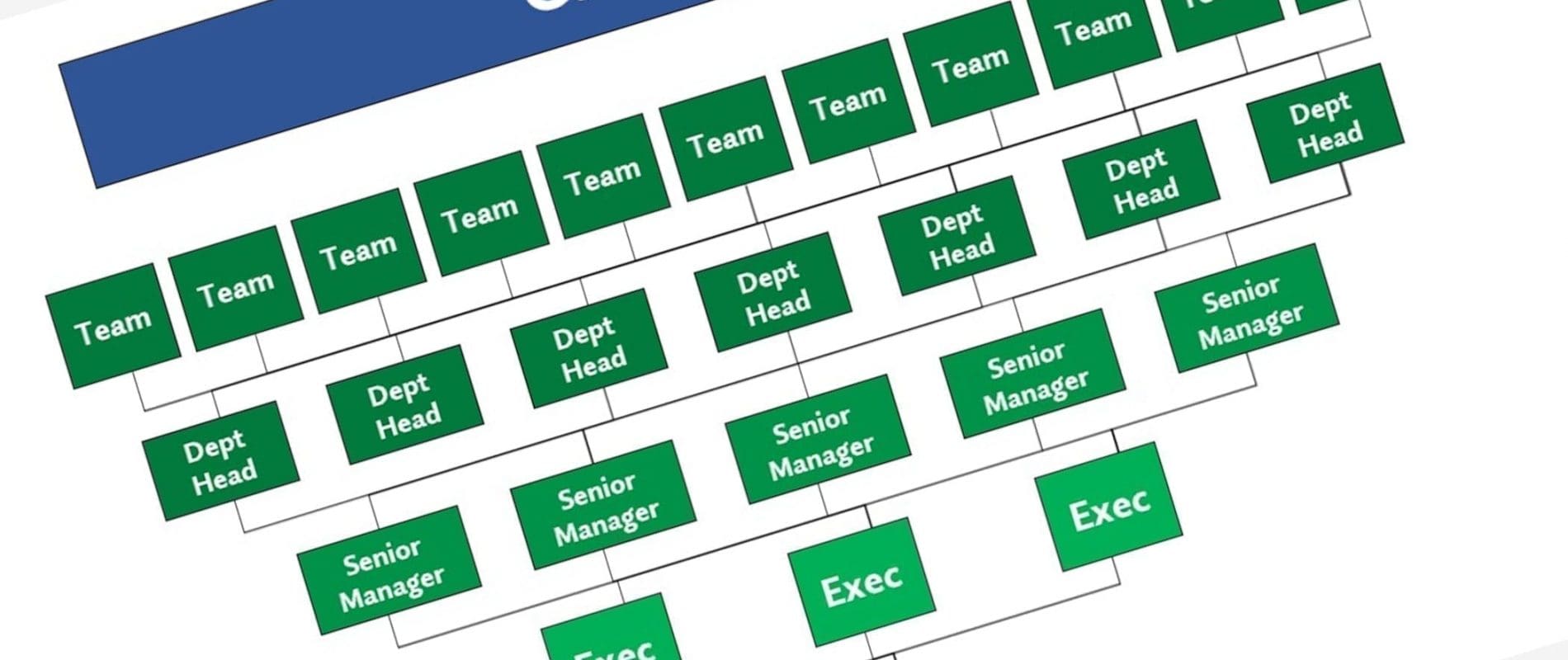

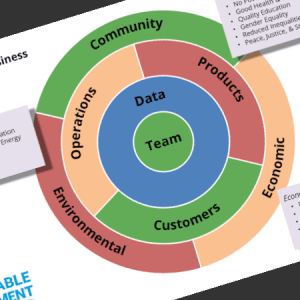

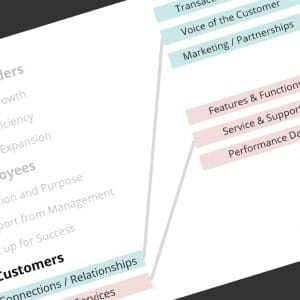
Comments (0)